Welsh Sheep-Shearing Cake Is a Forgotten Pastoral Pleasure
Cacen gneifo was a traditional gift for farmhands during wool-gathering season.
Once a year—typically in the early summer, then occasionally again at the start of the fall—Welsh sheep farmers enlist the help of shearers and farmhands to help them for a special occasion: Shearing Day. In the midst of an arduous day of shearing sheep, the workers are rewarded with cups of tea, a spread of food, and cake.
Shearing cake, or cacen gneifo (pronounced “c-ack-en guh-nigh-fo”) in Welsh, was traditionally made to celebrate Shearing Day. A simple, buttery sponge, the cake was studded with heady caraway seed, lemon rind, and candied citrus peel, and finished with a dusting of confectioners’ sugar. While some older generations have nostalgic memories of baking it with family members, today many struggle to recollect shearing cake.
But the tradition of the host farm providing lunch for the shearers, farmers, and helpers continues. “You have got grubby hands, you are shearing, you need to eat something out in the fields,” says Susan Davies, who runs Daffodil Kitchen, a food blog that focuses on traditional Welsh dishes. With seasonal foods enjoyed on Harvest Day and Shearing Day appearing alongside celebrations such as Christmas in many traditional Welsh recipe books, it seems that both were treated as festive occasions.
“A celebration is certainly how I saw it in my head,” Davies says. “[The cake]’s not something you’d make all year round. Shearing Day was known for the season when farmers and their hands came together and helped each other. You’re giving them a treat to say thank you.”

Before the invention of modern farming tools, harvesting, corn threshing, and sheep shearing were communal efforts in Wales. Each farm in an area would be allocated its own annual Shearing Day when the surrounding community would help to shear, sort, and clean the wool. Neighboring farms would join together to fulfill the seasonal tasks, with family and friends traveling from farther away to pitch in. The day’s work wasn’t just for humans’ benefit, either: Shearing helps to reduce heat exhaustion and parasites for the sheep.
The women from the host farm would spend days preparing various dishes to be eaten in a communal circle, under a shaded area of the fields. During the agricultural depression of the late 1800s, families often gave food as payment to villagers for working on their farm over Harvest, Shearing, and Threshing days. Oatmeal, pints of buttermilk, and rows of land for planting potatoes were common gifts and payment that cottagers were reliant upon to get through the winter months.
Records surrounding the introduction of Shearing Day’s cake are scarce. The combination of recipes being passed down orally and the fading of the Welsh language over the last few centuries has resulted in the origin of Welsh “old foods” being difficult to trace. One of the earliest written recipes, however, comes from the renowned Victorian domestic and culinary columnist Mrs. Beeton.

Isabella Beeton wrote about and published recipes sent in from her readers at The Englishwoman’s Domestic Magazine in the 1850s and ’60s. Perhaps shearing cake was sent in from a rebellious Welsh woman keen to infiltrate middle-class English cookbooks with Welsh heritage foods. In her recipe, published in The Best of Mrs Beeton’s Cakes and Baking, Beeton notes the cake was “traditionally served with tea” and says to “rub in the butter until the mixture resembles breadcrumbs, then stir in the sugar, lemon rind and spices.”
Whether shearing cake was a teatime nibble, as Beeton attests, or the centerpiece celebratory treat is difficult to determine. But the expensive ingredients of sugar, butter, and lemon zest suggest a festive cheer or, at least, the extreme generosity or gratitude of the host farm.
It’s possible shearing cake evolved from caraway bread (bara carawe), a buttermilk-enriched dough scattered with caraway seeds that also appears in traditional Welsh recipe books. Aside from using less sugar or honey and the omission of lemon zest, there is a strong resemblance between caraway bread and older shearing cake recipes. Both would have been made similarly to scones; creating breadcrumbs by rubbing bacon (or beef) fat and flour through one’s fingertips, then adding buttermilk (which gives shearing cake its slight yogurty aftertaste), caraway seeds, and honey.
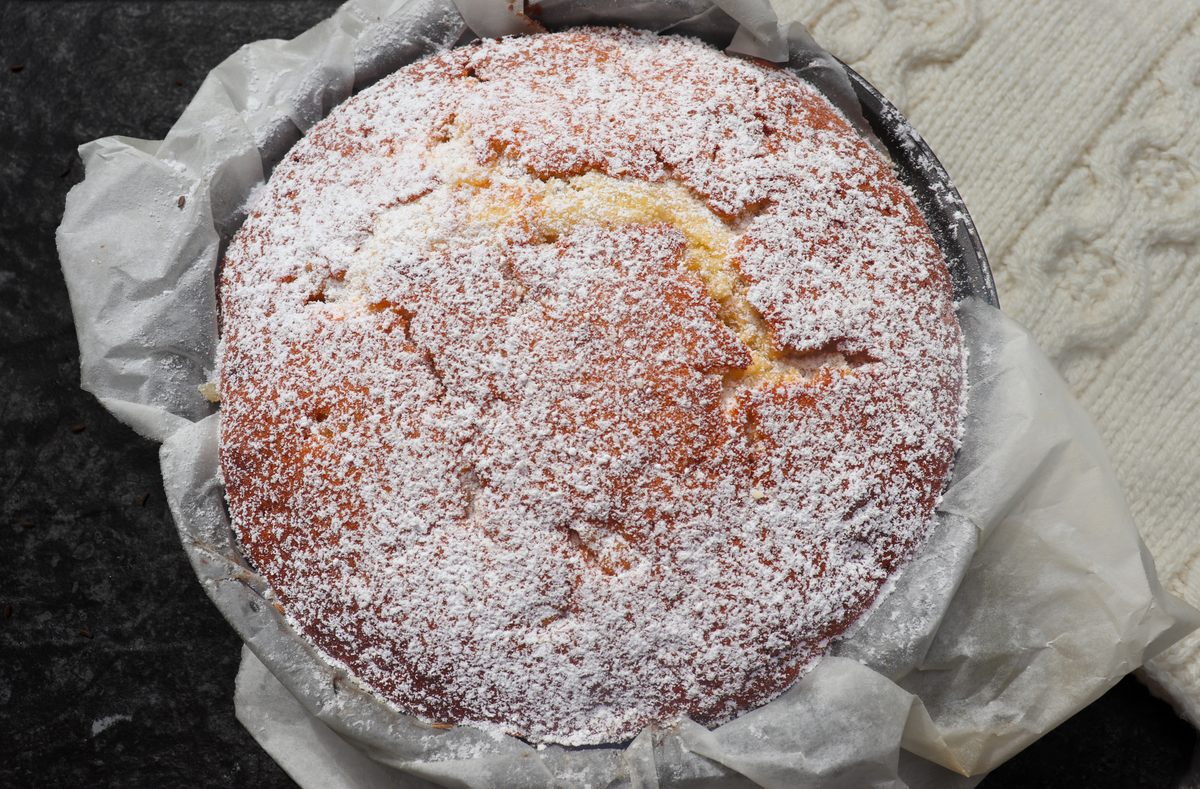
Prominent in both bara carawe and cacen gneifo, caraway seed was an auspicious ingredient on Welsh farms. Brought to Wales by the Romans, the seeds were symbolic of a prosperous harvest and cited in old folk stories as a way to help keep lovers infatuated and as a mild anesthetic, perhaps due to their heady, aniseed-like flavor.
Today, Shearing Day continues, albeit with a few modern tweaks. “The majority of farmers—when shearing or doing any big job on a farm—focus on their own farm and their own sheep in order to get the job done,” says Gareth Jones, a sheep farmer from North Wales and the head of member engagement at British Wool, a collective of 35,000 farmers across Britain. “But, the majority of farmers put lunch on for shearers… It is a very big tradition.”
Still, collective farming remains essential to the livelihoods of farmers today. British Wool’s farmers work together to collect, grade, market, and sell their wool internationally. The co-operative has sites across the U.K. where farmers bring their wool to be graded and provides them with access to the international market, which would be extremely difficult to do individually.
There’s also the new crop of sheep farmers trying to find innovative ways to bring the practice into the 21st century. Kate Drury, a PhD student in wool innovation at the Royal Agricultural University, is investigating the use of wool in a marine environment as an alternative to plastic, particularly for farming seaweed (a key ingredient in laverbread, another traditional Welsh food).
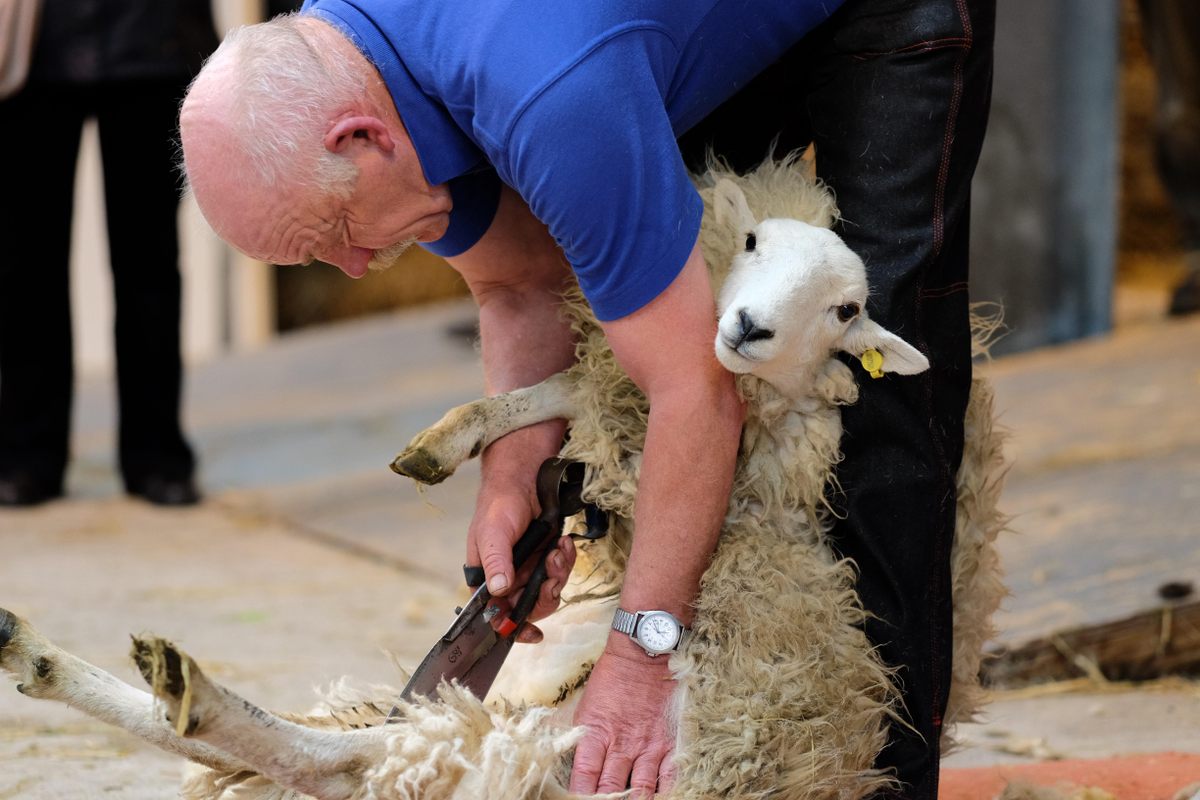
“The beauty about U.K. wool is that we have the most varieties of wool in the world and we know so much about them,” she says. “Wool is sympathetic to the environment…marine life ecosystems completely integrate into its components.”
Wool is a family affair for Drury, who is a fourth-generation sheep farmer. “I’ve got pictures on my wall of my grandfather shearing with a young lad next to him, turning a wheel. It was a hand-cranked shearer,” she says. “Then there is a picture of my grandmother with a picnic and all the shearers.”
Sheep shearing is still celebrated through competitions and agricultural shows. On a world level, Welsh sheep shearers are renowned for their skills. Each year, people gather together for the Royal Welsh Show and each county hosts their own annual agricultural shows. In 2019, an event on Anglesey, a small island off the coast of North Wales, even featured a shearing cake competition.
Even though there are other shearing cakes in the world—in Australia and New Zealand, the iconic chocolate, coconut, and jam lamington or a currant loaf is a typical Shearing Day nibble—Welsh shearing cake is increasingly becoming a distant memory. Today, it might not be common. But for those who still bake it, cacen gneifo holds a special place in their hearts and recipe books.
“Walking into my grandmother’s kitchen, there was just this whole ambience. It was a warm room with the food cooking and the seats around the AGA [stove],” Davies, the food blogger, says. “It tasted heavenly.”

Welsh Shearing Cake (Cacen Gneifo)
- Prep time: 10 minutes
- Cook time: 45 minutes
Ingredients
- 8 ounces butter
- 8 ounces caster sugar
- 8 ounces self-raising flour
- 4 eggs
- 4 ounces candied citrus peel
- 2 tablespoons buttermilk
- 2 teaspoons caraway seeds
- 1 teaspoon ground or grated nutmeg
- Zest of 1 lemon
- Sprinkle of confectioners’ sugar
Instructions
-
Preheat the oven to 350°F. Grease and line an 8-inch round cake tin with greaseproof paper.
-
Cream together the butter and sugar (see notes) in a large mixing bowl until it is well-combined, light and fluffy. In a separate bowl, whisk together the eggs and buttermilk with a fork.
-
Bit by bit, whisk the eggs and buttermilk into the butter and sugar mixture.
-
Once all of the eggs and buttermilk have been added, fold in the self-raising flour a little at a time.
-
Stir in the lemon zest, caraway seeds, nutmeg, and candied citrus peel.
-
Pour the cake batter into the prepared pan. Bake for 45 minutes or until golden brown and a wooden toothpick comes out completely clean. If the top is golden brown before the toothpick comes out clean, cover with tin foil for the remaining cooking time.
- Let the cake cool, then dust it with confectioners’ sugar to serve.
Notes and Tips
While earlier recipes recommend rubbing the butter into the flour and then adding the wet ingredients, more modern versions tend to suggest creaming the butter and sugar before adding the eggs and buttermilk. The latter results in a cake with a fluffier texture.
Gastro Obscura covers the world’s most wondrous food and drink.
Sign up for our regular newsletter.



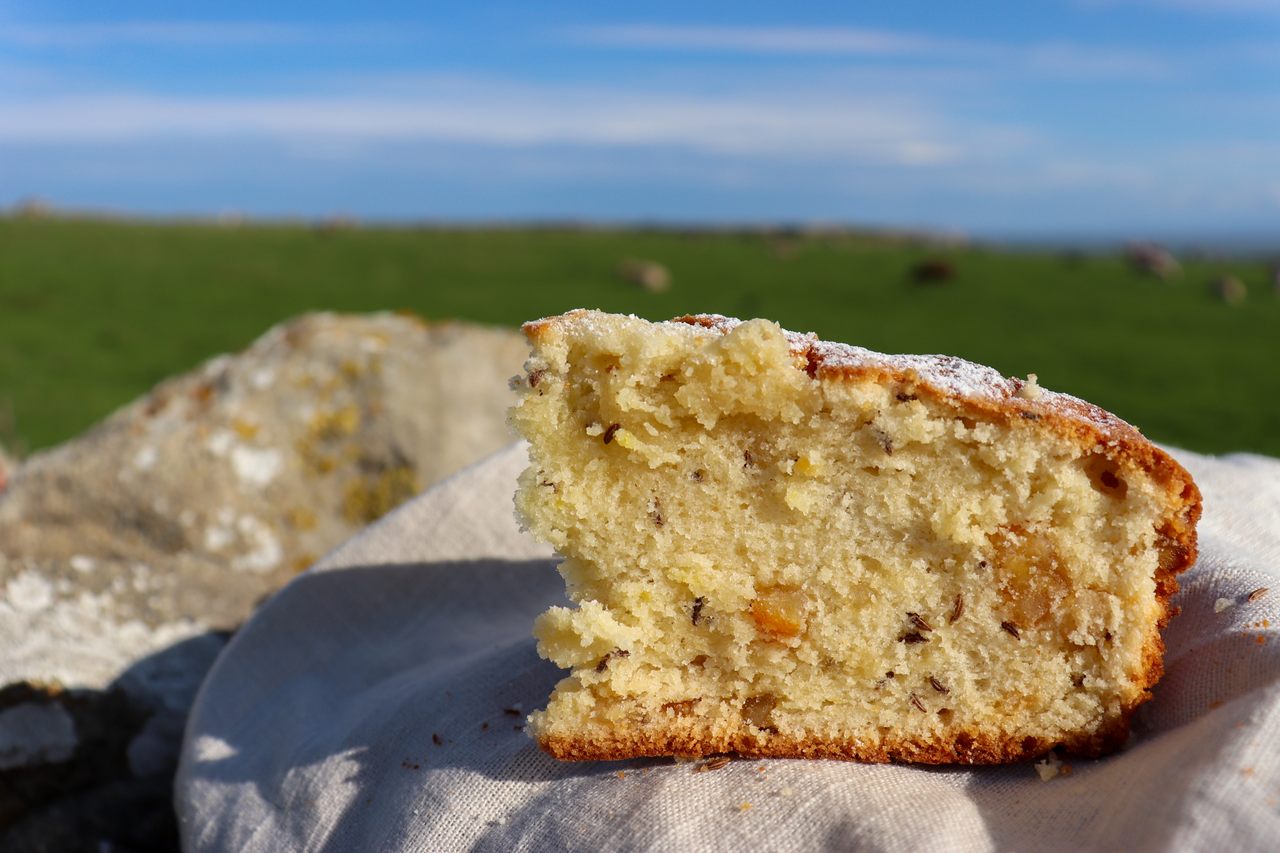


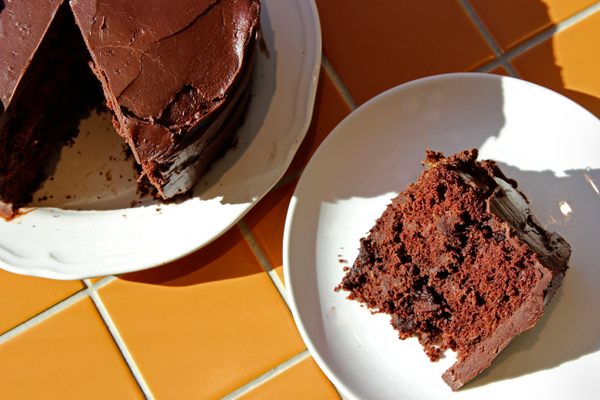

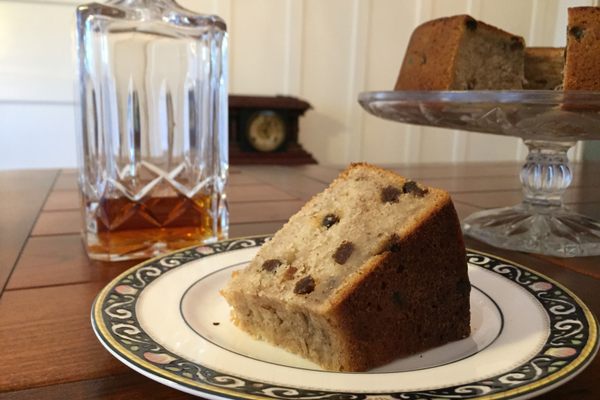








Follow us on Twitter to get the latest on the world's hidden wonders.
Like us on Facebook to get the latest on the world's hidden wonders.
Follow us on Twitter Like us on Facebook